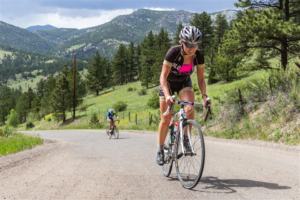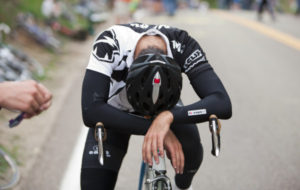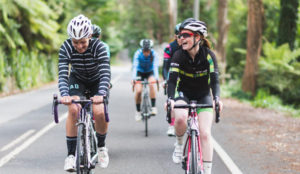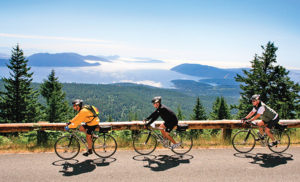What is the purpose of a cycling training plan? When you boil it down, it comes down to setting goals and measuring progress. A training plan serves as your road map to get you to a certain place, but what are some important things to look for? Just as you wouldn’t start trying to navigate the streets of a foreign city without a detailed map, you want to establish what aspects you need included to see success.
There are a lot of options when it comes to training plans, and also the means to how you access them. Some will choose to spend a little more and hire a personal coach to build their plan for them. Others will use online resources or join a certain challenge. The issue here is that these are not personalized to you. What happens when the timeline set up in a certain plan doesn’t match your life in a realistic way? You need to be able to understand the basics, so that you can take certain aspects of a cycling training plan into your hands.

Why You Need a Training Plan
Establishing a cycling training plan eliminates the danger of becoming complacent or falling into the “I will do it tomorrow” thought pattern. It makes you accountable as you follow the plan. It motivates you to change your habits and manage your time more efficiently to finish your first century ride or sign your name to that first Gran Fondo event.
Another great aspect of a training plan is to avoid the dreaded ‘plateau’ that is so common with athletes. As an active lifestyle becomes part of who you are, it’s easy to reach a certain point and stay there. There’s nothing wrong with maintaining a healthy fitness level, but if you want to continue to see changes, then you have to keep pushing yourself.
Cycling Training Plan Options
- Personal Coach – A personal coach will not only create a training plan tailored to you and your goals, but they will also help keep you accountable. They will be checking in on your progress, and have the knowledge to make necessary changes to get you to where you want to be as quickly as possible. The downside? They are, in most cases, the most expensive option.
- Pre-Prepared Training Plans – There are a ton of resources available online that can serve as a general outline or starting point for your training plan. In some cases they can be difficult to follow because it will not take into account your lifestyle, starting point, or your specific goals.
- Build your own – It’s always better to understand why you’re doing something, rather than simply doing it because someone tells you to. So, if you have the time to do the research and put together a comprehensive training plan for yourself, by all means do it! This can not only work well, but it help you come to understand your own body a whole lot better.
Start at the end
No matter what option you go with for coming up with a training plan, you will need to define your goals. It may sound counterintuitive, but starting from your overarching goal and working backwards is actually a great idea. This may be weight loss, completing a century ride, or doing a multi-day Gran Fondo. Once you’ve defined this goal, you can break it down into tangible “check points.” These could be various distances, target weights, or a certain number of hours spent on the bike.
Measure your progress
Now you need to take a look at where you are right now. This may include testing yourself to find your mental and physical limits. What can your body handle? This can be done a number of ways.
- Power Meter – A power meter is a great tool as it make comparisons easy. It can give consistent feedback on your effectiveness, and is a great training tool. Power is ultimately a measure of how hard you are working, and by using a power meter on your bike, you can more precisely monitor your effort. That being said, it’s not a must-have.
- Heart Rate – Using a heart rate monitor is a great way to structure workouts, and a lot of training plans include heart rate zone training. Heart rate training is a valuable tool for all athletes, as it helps bypass your brain to listen directly to what your body is telling you.
- Your Brain! – You don’t really need anything but a bike to complete a cycling training plan. You can make your own intensity scale (as long as you’re honest with yourself) from 1 – 10. 1 would be “I could do this all day,” and 10 would be “this is everything I’ve got in me.” The issue, of course, is that it takes a special kind of person to be that disciplined with themselves.
One of the greatest things about a training plan is being able to track your progress in a tangible way. Once you sign up for a cycling training plan you will see your body, mind, and outlook improve over the next few days, weeks, and months. You will continuously break your own personal records and the records of your friends, as you monitor your own fitness. Keep track of each ride you do, even if you just write down the basics like distance and time. Keeping a food diary can also be a great way to look at why you may feel great some rides, and then not so much on others.
Not only will this show you how much you can achieve, but it also gives you some serious bragging rights. There’s nothing more satisfying than looking at your year end totals, whether it be distance or time in the saddle, and seeing some huge numbers.
 Off the Bike
Off the Bike
A good cycling training plan helps you to keep track of less-obvious issues of fitness such as sleep and recovery, nutrition and hydration, and strength and stretching. You’re more likely to meet your fitness and weight loss goals if you’re looking after every one of these aspect. A detailed cycling training plan helps you keep track of these small details and makes you more conscious of them on a day-to-day basis.
- Strength / Cross Training – Strength training for cyclists further develops tendons and supporting muscles which can help treat and prevent overuse injuries. Your training plan should include some strength training, whether through some basic weight training or cross training.
- Stretching – Stretching can aid in aligning the thick and thin muscles back into their ordered state after rides, as well as remove the lactic acid buildup that causes soreness. Maintaining flexibility will also help you stay in the correct posture while riding, which can prevent injury.
- Nutrition & Hydration – Eating right can be hard at the best of times, especially for those of us who like to exercise as a hobby. With a passion for cycling often comes a need for a balanced diet – and this is even more true when you opt to cycle for long periods of time, or working towards a goal. Having a cycling training plan that includes a detailed nutrition plan can make sure you are properly fuelled for each ride, and will help you get to those goals faster.
Stay Flexible and Adapt
As with mapping out anything, whether it be a road trip or your cycling training plan to success, you need to remain flexible. If you have a rough night’s sleep, or feel like you’re coming down with a cold, then ignore what your plan says and take a rest day. There’s no point in half-hearted training, and at that point taking a rest day is probably more important. You have to be able to have the freedom to switch around training days, because things will come up. Having structure to your training is important to ensure it happens, but you also need to remain flexible enough to have a life!


 Go on group rides
Go on group rides